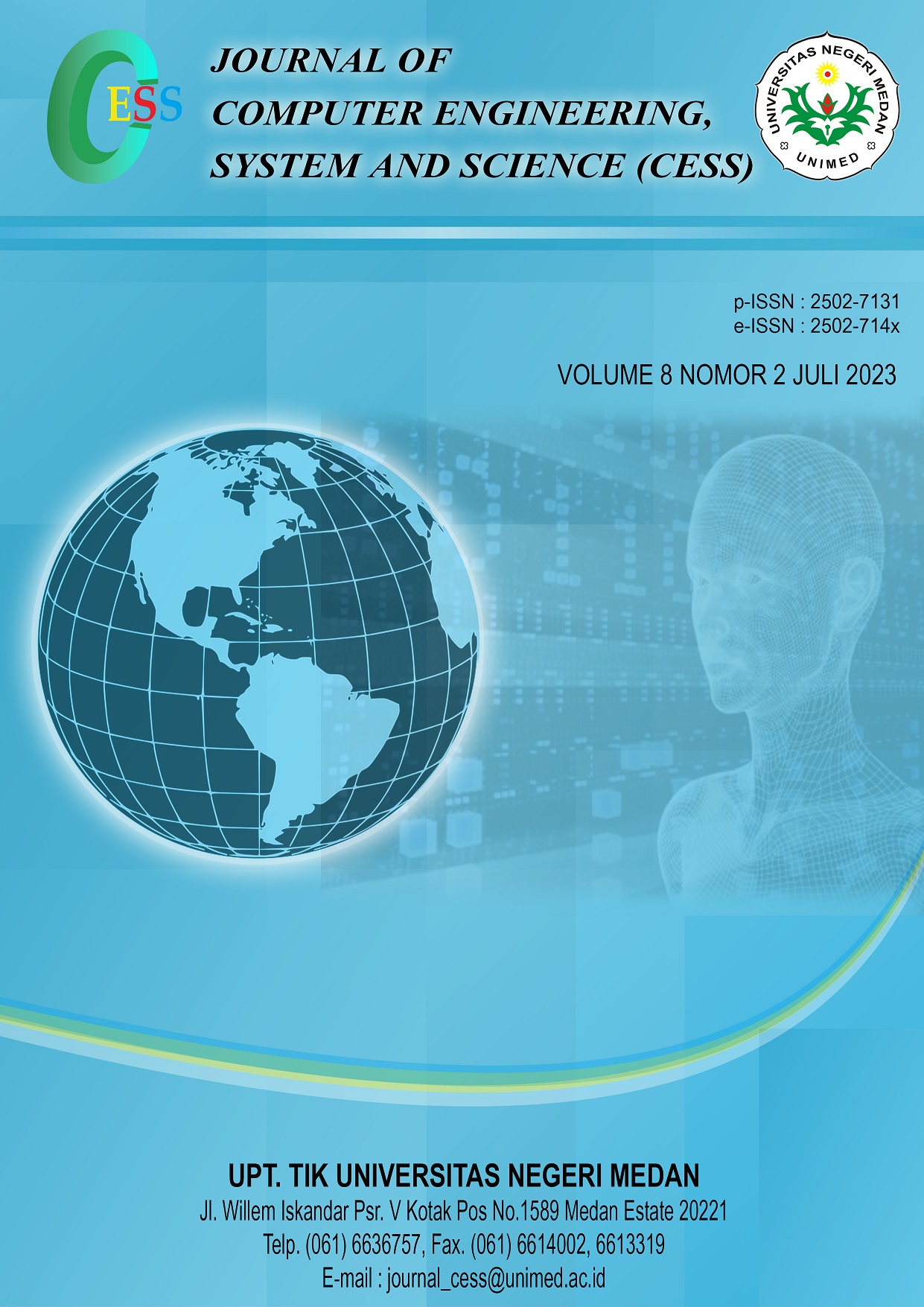Use of the SAW (Simple Additive Weighting) Decision Making System in Determining the OSIS Board of Senior High Schools
DOI:
https://doi.org/10.24114/cess.v8i2.43972Keywords:
Bobot, Kriteria, OSIS, SAW, Sistem Pengambilan KeputusanAbstract
Dalam mengambil keputusan melalui sistem sangatlah diperlukan. Karena dengan menggunakan sistem yang benar, maka keputusan dapat diperoleh dengan akurat dalam waktu yang singkat. Sistem Pengambilan Keputusan metode SAW digunakan pada penelitian ini untuk menolong pihak sekolah dalam menentukan keputusan terhadap siswa-siswi yang tepat sebagai anggota pengurus OSIS. Kriteria-kriteria yang ditentukan pada pengambilan keputusan ditentukan berlandaskan kriteria yang cocok dan berhubungan dengan akademik, karakter, serta kedisiplinan siswa-siswi. Adapun kriteria-kriteria yang dipakai adalah : Prestasi Belajar (Akademik), Kedisiplinan (Karakter), Kerjasama (Karakter), Absensi (Komitmen dan Karakter) serta Tanggungjawab (Karakter). Pemberian bobot pada setiap kriteria didasarkan pada urutan daripada kepentingan atau kebutuhan dari yang paling dibutuhkan sampai yang paling butuh. Dari hasil penggunaan Sistem Pengambilan Keputusan SAW, menunjukkan adanya keakuratan dan ketepatan dalam pemilihan pengurus OSIS di sekolah menengah atas. User Interface dan Sistem Database yang dipakai menggunakan MySQL dan PHP. Desain sistem untuk menggambarkan fungsi-fungsi pada sistem tersebut menggunakan UML.It is important to use decision support system applicaiton to help management to improve efficiency in making decision. Decision Support System SAW (Simple Additive Weighting) method is use to help the school to decide which students are appropriate to be the Students Executive Board of Studen Union in secondary school. The SAW method use some criteria based on academic achievement, characters and discipline. The criteria that are used in the system are : Academic Achievement, Disciplince, Teamwork, Attendance, and Responsibility. Each of the criteria is given certain weight based on the most to the least important list criteria. The result of using SAW method shows that the top list of the students are the most appropriate students to be sitting in the Executive Boards of Student Union. UML is used to design the model of the system. The system application GUI are build by using MySQL and PHPDownloads
References
P. Delgadoa, C. Vargasb, R. Ackermanc, and L. Salmerón, œDon™t throw away your printed books: A meta-analysis on the effects of reading media on reading comprehension, Educ. Res. Rev., vol. 25, pp. 23“38, 2018, doi: 10.1016/j.edurev.2018.09.003.
F. Reichert, D. Lange, and L. Chow, œEducational beliefs matter for classroom instruction: A comparative analysis of teachers™ beliefs about the aims of civic education, Teach. Teach. Educ., vol. 98, pp. 1“13, 2020, doi: 10.1016/j.tate.2020.103248.
J. Roick and T. Ringeisen, œStudents™ math performance in higher education: examining the role of self-regulated learning and self-efficacy, Learn. Individ. Differ., vol. 65, pp. 148“158, 2018.
G. Ocak and A. Yamaç, œExamination of the relationships between fifth graders™ self-regulated learning strategies, motivational beliefs, attitudes, and achievement, Educ. Sci. Theory Pract., vol. 13, no. 1, pp. 380“387, 2013.
S. Li and J. Zheng, œThe relationship between self-efficacy and self-regulated learning in one-to-one computing environment: The mediated role of task values, Asia-Pacific Educ. Res., vol. 27, no. 6, pp. 455“463, 2018, doi: 10.1007/s40299-018-0405-2.
B. J. Zimmerman and A. R. Moylan, œSelf-regulation: where metacognition and motivation intersect, in D. J. Hacker, J. Dunlosky, and A. C. Graesser, Eds., Handbook of Metacognition in Education, 2009, pp. 299“315.
P. R. Pintrich, D. A. F. Smith, T. Duncan, and W. Mckeachie, A manual for the use of the motivated strategies for learning questionnaire (MSLQ). Ann Arbor, Michigan, 1991.
M. Pressley and C. B. McCormick, Advanced educational psychology for educators, researchers, and policymakers. New York, USA: HarperCollins College Publishers, 1995.
A. Bandura, Prentice-Hall series in social learning theory. Social foundations of thought and action: A social cognitive theory. Prentice-Hall, Inc., 1985.
A. L. Dent and A. C. Koenka, œThe relation between self-regulated learning and academic achievement across childhood and adolescence: a meta-analysis, Educ. Psychol. Rev., vol. 28, no. 3, pp. 425“474, 2015, doi: 10.1007/s10648-015-9320-8.
Downloads
Published
How to Cite
Issue
Section
License
Copyright (c) 2023 CESS (Journal of Computer Engineering, System and Science)

This work is licensed under a Creative Commons Attribution 4.0 International License.















